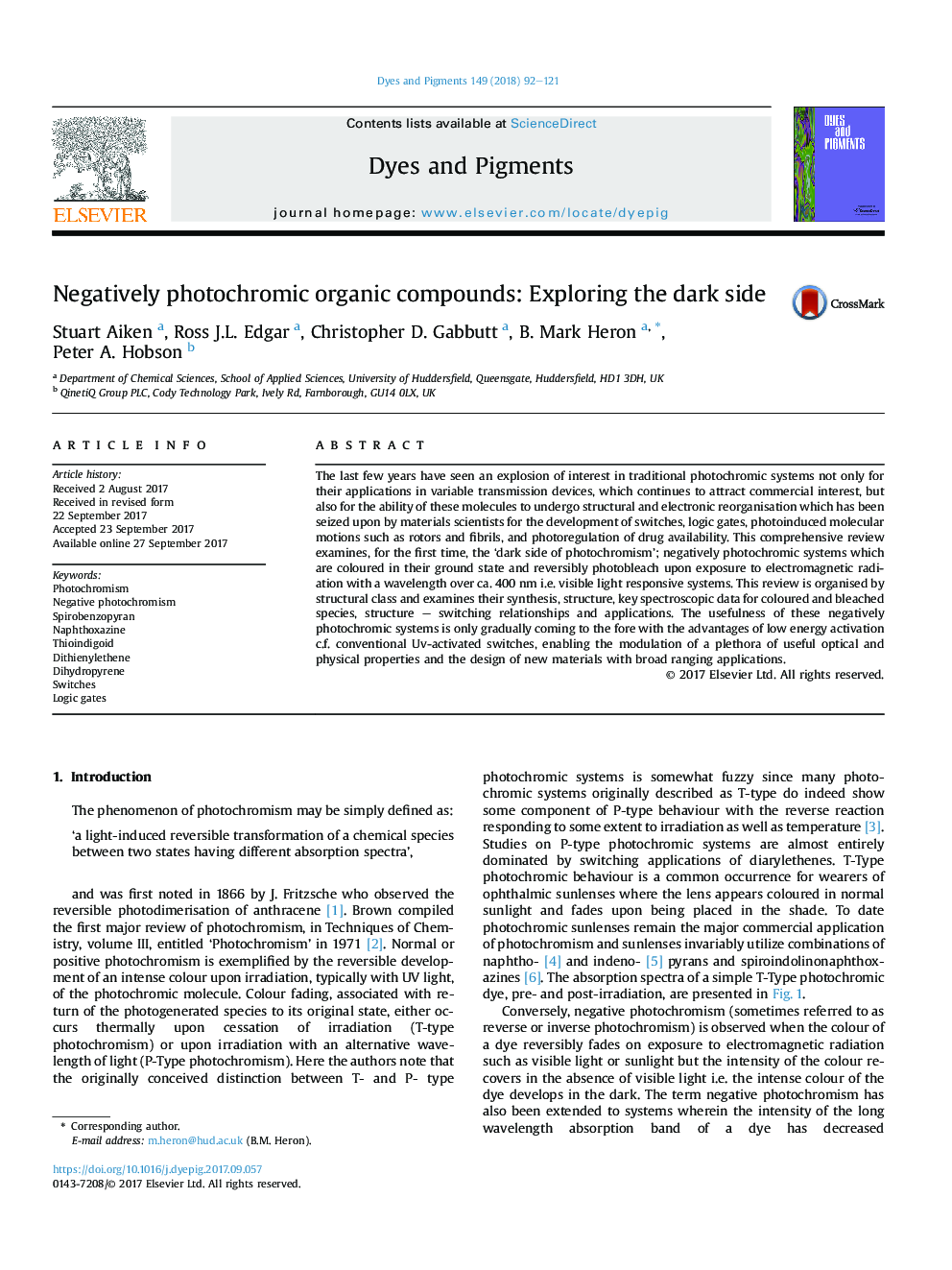| Article ID | Journal | Published Year | Pages | File Type |
|---|---|---|---|---|
| 4765536 | Dyes and Pigments | 2018 | 30 Pages |
Abstract
The last few years have seen an explosion of interest in traditional photochromic systems not only for their applications in variable transmission devices, which continues to attract commercial interest, but also for the ability of these molecules to undergo structural and electronic reorganisation which has been seized upon by materials scientists for the development of switches, logic gates, photoinduced molecular motions such as rotors and fibrils, and photoregulation of drug availability. This comprehensive review examines, for the first time, the 'dark side of photochromism'; negatively photochromic systems which are coloured in their ground state and reversibly photobleach upon exposure to electromagnetic radiation with a wavelength over ca. 400Â nm i.e. visible light responsive systems. This review is organised by structural class and examines their synthesis, structure, key spectroscopic data for coloured and bleached species, structure - switching relationships and applications. The usefulness of these negatively photochromic systems is only gradually coming to the fore with the advantages of low energy activation c.f. conventional Uv-activated switches, enabling the modulation of a plethora of useful optical and physical properties and the design of new materials with broad ranging applications.
Keywords
Related Topics
Physical Sciences and Engineering
Chemical Engineering
Chemical Engineering (General)
Authors
Stuart Aiken, Ross J.L. Edgar, Christopher D. Gabbutt, B. Mark Heron, Peter A. Hobson,
